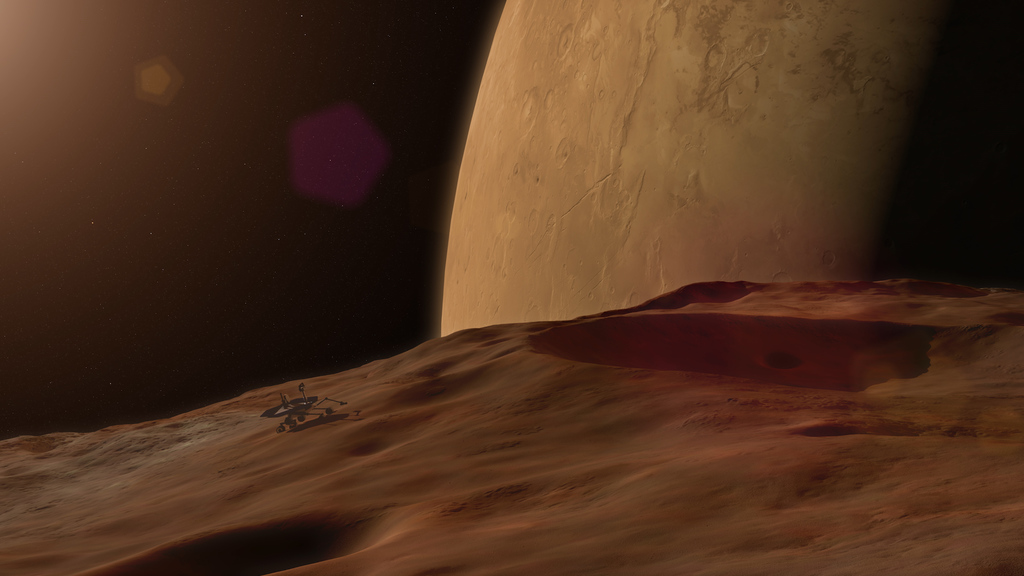Falling Apart

Weird marks on Phobos’ surface are early signs of the end for this moon of Mars.
Mars’ moon Phobos is lined with shallow grooves that stretch across its surface. These grooves were long thought to be fractures caused by the impact that formed a five-mile diameter depression on the moon known as Stickney crater. Now, new modeling supports the view that the grooves are more like "stretch marks" produced by tidal forces, the mutual gravitational pull of the planet and the moon. Orbiting a mere 3,700 miles above the surface of Mars, Phobos is closer to its planet than any other moon in the solar system. As the moon circles Mars, the planet’s gravity draws Phobos inward. Scientists have found these forces acting on Phobos are so strong, they produce more than enough stress to fracture its surface. It's expected that the moon will fall apart in 30 to 50 million years. Watch the video to see a 360-degree view of Phobos.
Phobos' grooves appear as dark lines in this 3-D model created from high-resolution images of the moon's surface.

Scientists initially thought the grooves were created by the massive impact that made Stickney crater (lower right).

Observations show that some grooves are younger than others, which would be the case if the process that creates them is ongoing.

Close-up images reveal the parallel nature of Phobos’ grooves. The grooves were first imaged by NASA’s Viking mission in the 1970s.
For More Information
See NASA.gov
Credits
Please give credit for this item to:
NASA's Goddard Space Flight Center
Video courtesy of ESA/DLR/FU Berlin
Stickney crater image courtesy of NASA/JPL-Caltech/University of Arizona
Other images courtesy of ESA/DLR/FU Berlin/G. Neukum
-
Writer
- Elizabeth Zubritsky (ADNET Systems, Inc.)
-
Scientist
- Terry Hurford (NASA/GSFC)
Release date
This page was originally published on Tuesday, December 29, 2015.
This page was last updated on Wednesday, May 3, 2023 at 1:49 PM EDT.
